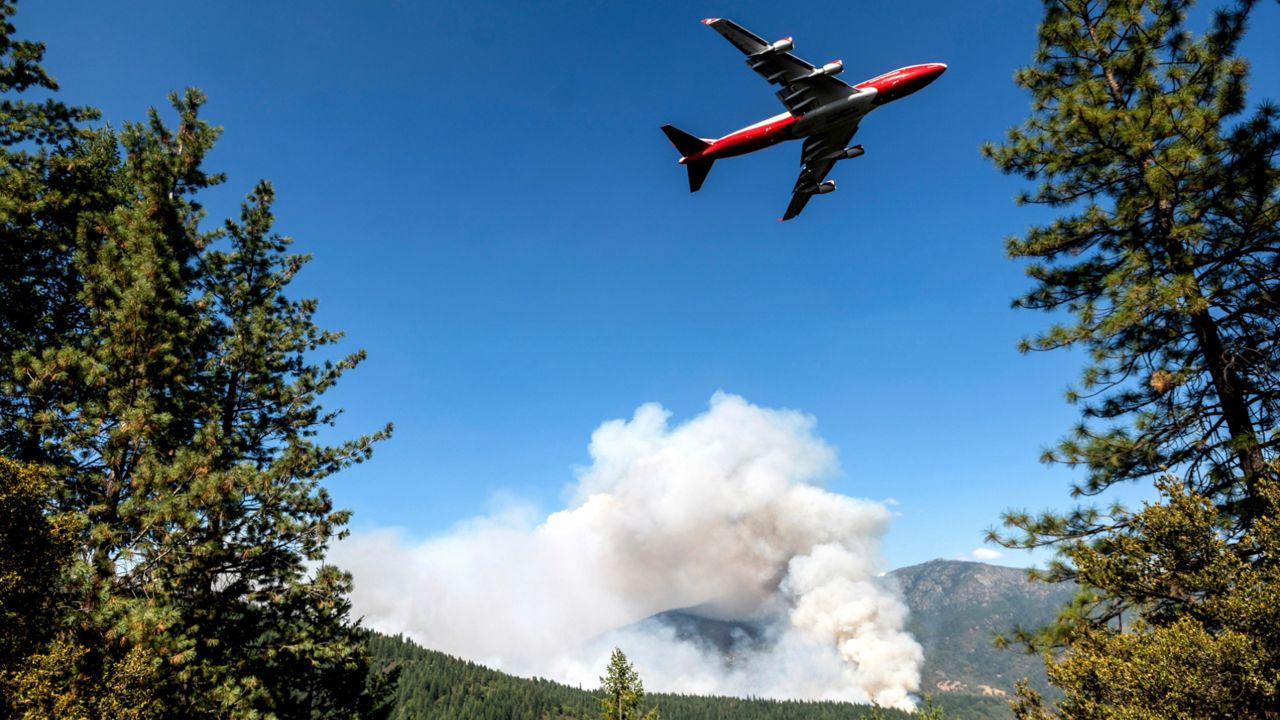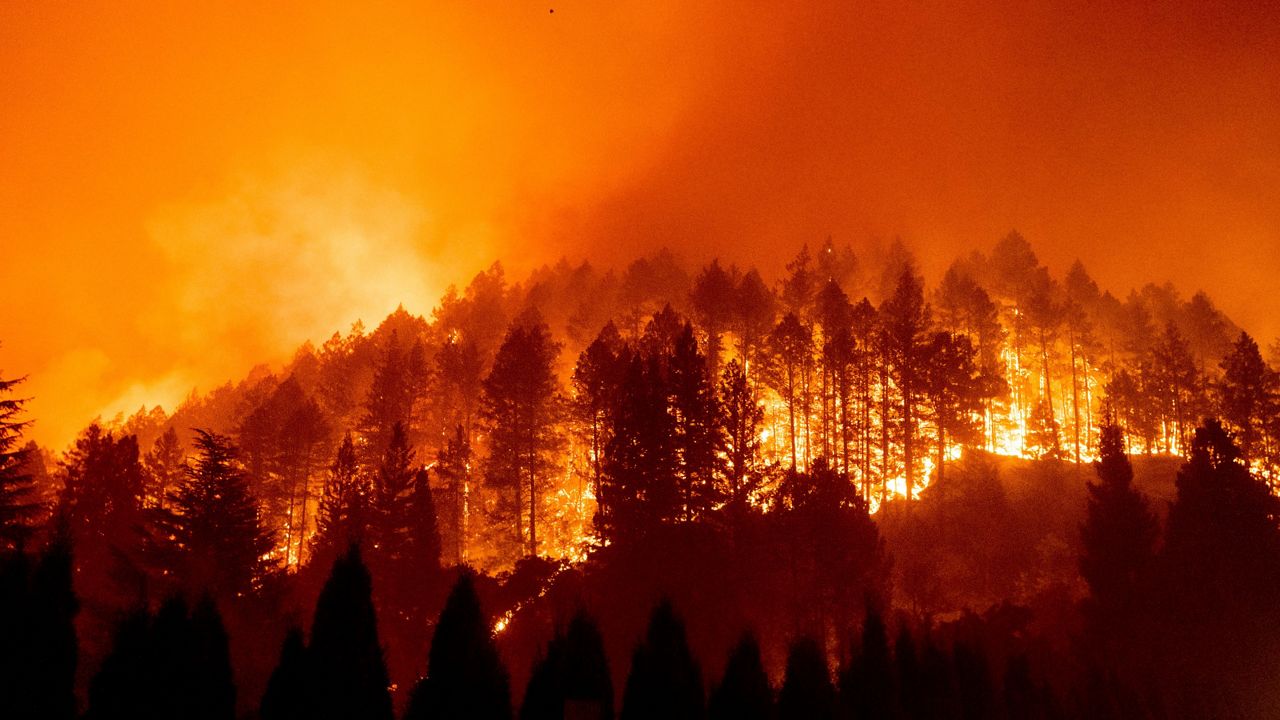27 major wildfires continue to burn across California on Tuesday, including two that started over the weekend.
Most of the fires are in central and northern California. The largest is the August Complex Fire, which has burned about 873,000 acres since it started on August 16. That’s nearly three times the area of Los Angeles.
Since August 15, California wildfires have killed 26 people and destroyed more than 7,000 structures. They've also caused widespread orange skies and lower air quality.
One reason for the big increase in wildfires? Surprisingly enough, the remnants of a tropical storm in August. It came north out of Mexico and interacted with a ridge of high pressure over Nevada.
"That led to extreme atmospheric instability which then led to a more than 10,000 lightning strikes over northern California, which then sparked hundreds of fires," says Spectrum News chief meteorologist, Robert Santos. "That alone caused the number of California fires this year to spike compared to last year."
Drought conditions began to develop in California in February and quickly worsened in the northern part of the state in April. Dry weather since then has kept a large area in severe-to-extreme drought status, according to the U.S. Drought Monitor.
While nearly the entire state is running a rainfall deficit this year, the dry conditions have hit the Central Valley and north especially hard. Precipitation in those areas is at least eight inches behind average since the start of 2020, with some spots facing as much as a 20-inch deficit.
Summer is the dry season in this part of the country, although precipitation should pick up as fall begins. In Redding, September’s normal rainfall is 0.64”, but this month’s actual rainfall is zero.
Santos adds that northern California had record-dry conditions last winter, giving things a head start. The previous winter was wet, which caused more vegetation growth - and more fuel - for this year's fire season.
Temperatures haven’t helped matters. Major heat waves, even by California standards, roasted the state this summer. Numerous daily record highs, and even some all-time record highs, fell by the wayside in August and September.
Above average heat has taken hold in a much of California for the entire year of 2020. The sweltering conditions have escalated since the start of summer. Many places have felt temperatures two to three degrees above normal during that time.
That may not seem like much since daily temperatures vary by a lot more than that. But over the long-term, that’s a big deal. Consider the human body: a small difference in temperature has a large effect. The same goes for air temperatures over months and seasons.
Santos points out that high heat doesn't necessarily directly contribute to the fires, but it makes fire-fighting all the more difficult.
Another heat wave is happening this week, challenging record highs of 90 to 100 degrees. The dry weather is going to last for a while, too. Through at least the next seven days, rain isn’t expected in California.

For those in fire-prone areas, it’s never too late to prepare and to know what to do if you need to evacuate.



